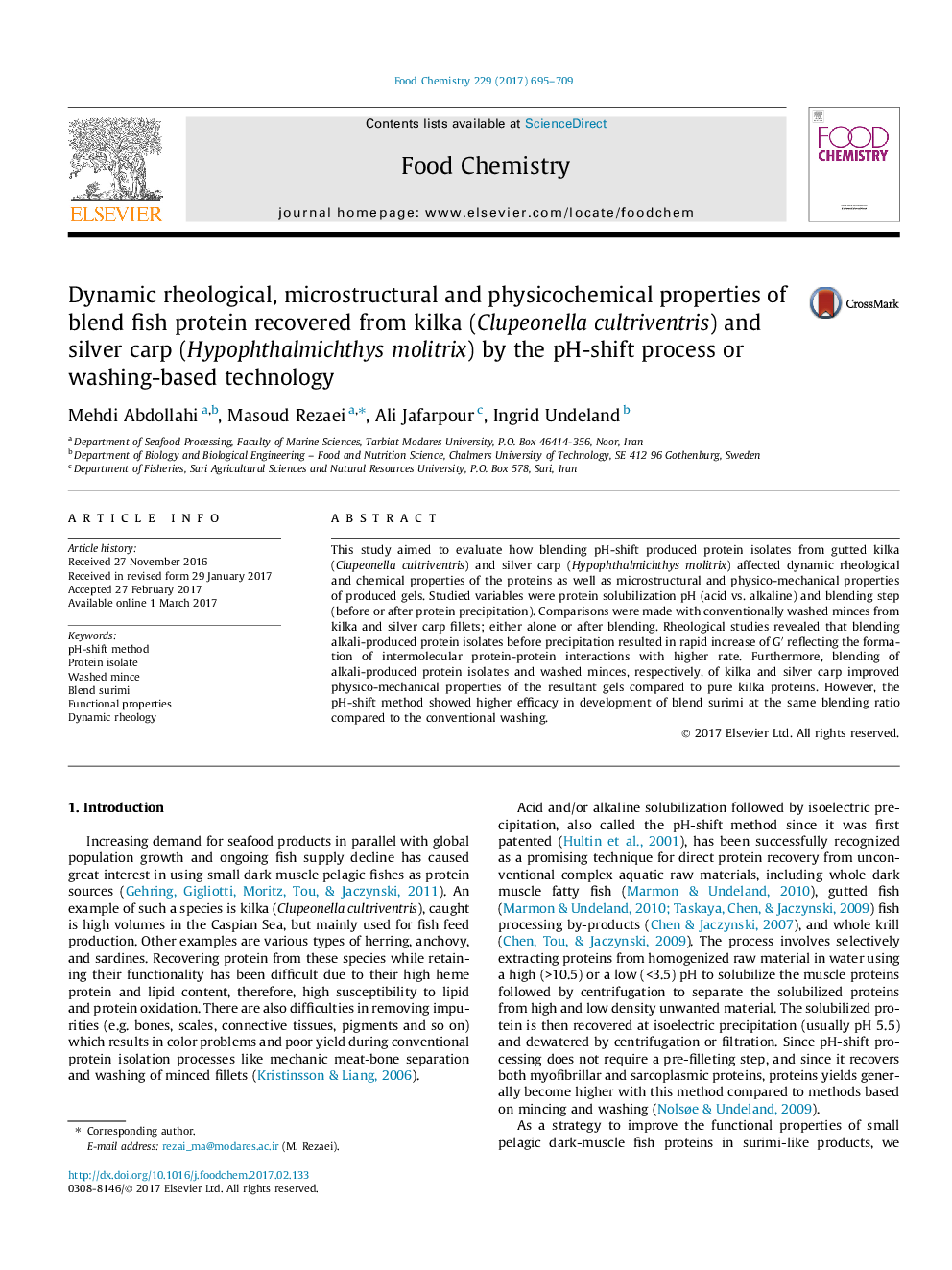| کد مقاله | کد نشریه | سال انتشار | مقاله انگلیسی | نسخه تمام متن |
|---|---|---|---|---|
| 5133660 | 1492063 | 2017 | 15 صفحه PDF | دانلود رایگان |

- Blending improved gel properties of protein obtained from underutilized fish.
- The pH-shift method showed higher efficacy in the development of blend surimi.
- pH history and blending step affected the characteristics of blend surimi.
- Alkaline process version produced higher quality blend surimi.
- Blending before precipitation resulted in more desirable blend surimi.
This study aimed to evaluate how blending pH-shift produced protein isolates from gutted kilka (Clupeonella cultriventris) and silver carp (Hypophthalmichthys molitrix) affected dynamic rheological and chemical properties of the proteins as well as microstructural and physico-mechanical properties of produced gels. Studied variables were protein solubilization pH (acid vs. alkaline) and blending step (before or after protein precipitation). Comparisons were made with conventionally washed minces from kilka and silver carp fillets; either alone or after blending. Rheological studies revealed that blending alkali-produced protein isolates before precipitation resulted in rapid increase of Gâ² reflecting the formation of intermolecular protein-protein interactions with higher rate. Furthermore, blending of alkali-produced protein isolates and washed minces, respectively, of kilka and silver carp improved physico-mechanical properties of the resultant gels compared to pure kilka proteins. However, the pH-shift method showed higher efficacy in development of blend surimi at the same blending ratio compared to the conventional washing.
Journal: Food Chemistry - Volume 229, 15 August 2017, Pages 695-709